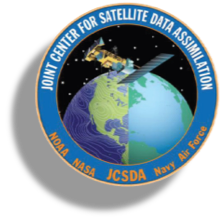Article by Dr. Guillaume Vernieres (SOCA), Dr. Travis Sluka (SOCA), and Kat Shanahan
On March 26, a dedicated internal release of the soca-science repository for the National Ocean and Atmospheric Administration (NOAA) Global Ocean Data Assimilation System (GODAS) was created. It was the culmination of three years of collaborative work between multiple groups, including the JEDI and SOCA teams at the JCSDA, as well as teams from NOAA’s Environmental Modeling Center (EMC) and Climate Prediction Center (CPC). The effort is the first application of a realistic, end to end, JEDI-based data assimilation (DA) system for a JCSDA partner agency — and a demonstration of the flexibility of the JEDI.
Dr. Daryl Kleist, JCSDA Executive Team member and Chief of the Data Assimilation and Quality Control Group at EMC, indicates how important this accomplishment is for NOAA: “The collaboration and internal release that came from this coordinated effort is an incredible achievement and allows us to meet an agency milestone. This is the first operationally relevant application of a JEDI-based system for our agency, setting the stage for NCEP to phase out the current legacy GODAS system and being working toward future JEDI-based applications and implementations.”
The target reanalysis system needed to achieve two goals: to use the Unified Forecast System (coupled MOM6-CICE6, UFS forecast model provided by EMC) and outperform the current NOAA marine climate reanalysis and monitoring system, and to include the marine cryosphere as part of the data assimilation. Both of these goals were achieved, the first at the second release, the second in the dedicated GODAS release (NG-GODAS). An illustration of the improvement of the upper ocean temperature and salt content is provided in Figure 1 below, showing a clear improvement of the salt content over GODAS and CFSR against the EN4 objective analysis.
Figure 1. Upper 300m heat (left column) and salt (right column) content for GODAS (top), CFSR (middle) and NG-GODAS (bottom). Analysis and figure provided by JieShun Zhu (NOAA-CPC). The NG-GODAS output was provided by Jong Kim (NOAA-EMC) and the EMC marine DA team.
While EMC and CPC are using a resource-conscious 3D variational analysis, the capability provided includes workflows for various ensemble DA algorithms and allows for strongly coupled DA between the sea ice and ocean. Figure 2 below demonstrates an application of the Ensemble Variational algorithm for strongly coupled DA, showing an example of a coupled ocean sea ice increment.
Figure 2. Illustration of a strongly coupled ocean and sea ice increment (write column) resulting from the assimilation of level 2 ice concentration from SSMIS (bottom left). The UFS ice concentration background is shown in the top left corner and the spread of the couple ocean ice UFS is shown in the middle column.
The system is continuously improved technically and scientifically on a daily basis, not only from scientists and engineers at the JCSDA but also from collaborators at NASA-GMAO, NOAA-EMC and NOAA-CPC. The next challenging applications will tackle high-resolution ocean DA for the purpose of the initialization of the ocean component of NOAA’s hurricane forecast system, the direct assimilation of radiances sensitive to ocean parameters, and coupled data assimilation (ocean, sea ice, and atmosphere) for the UFS and the NASA Goddard Earth Observing System (GEOS).


